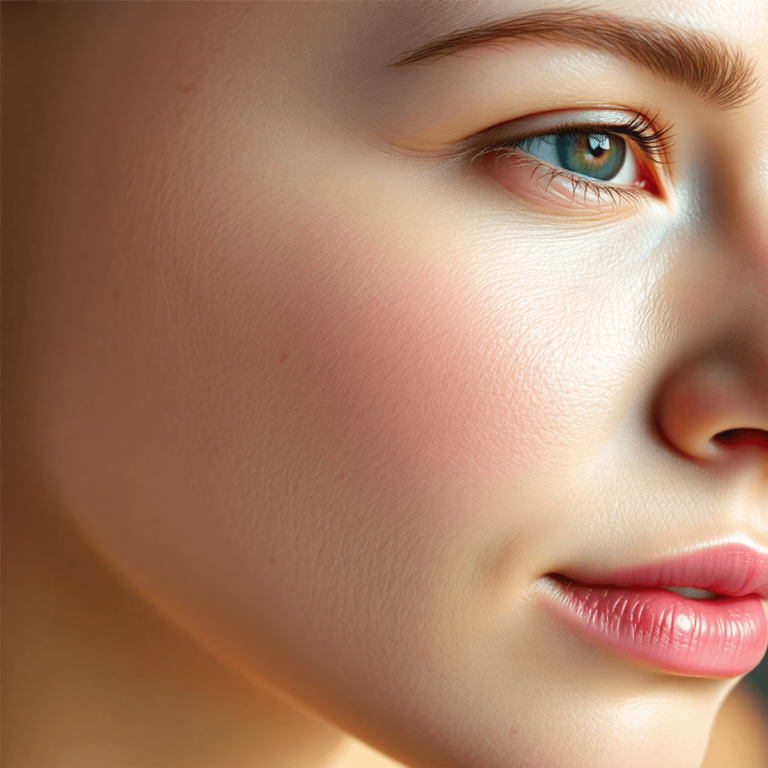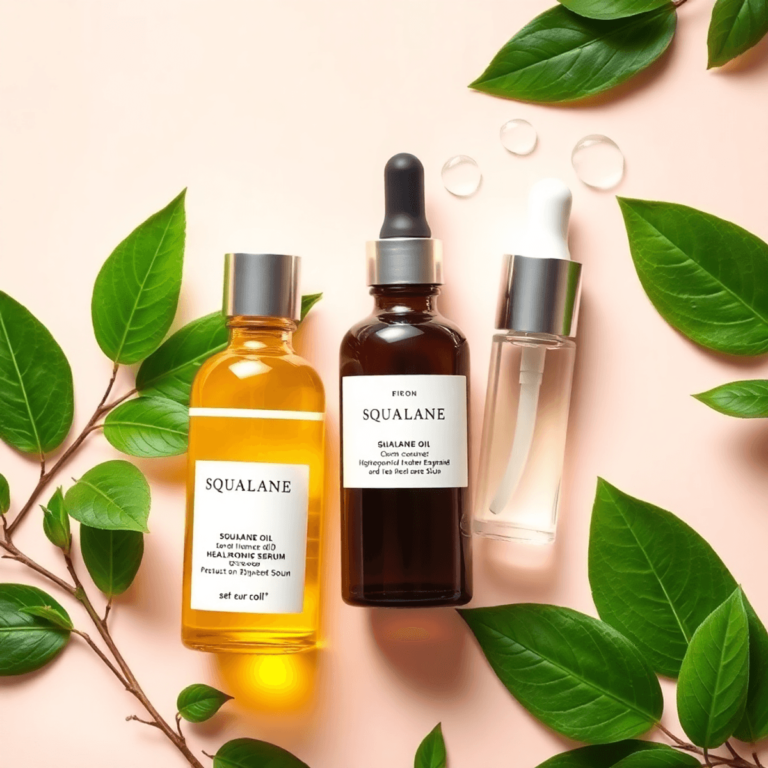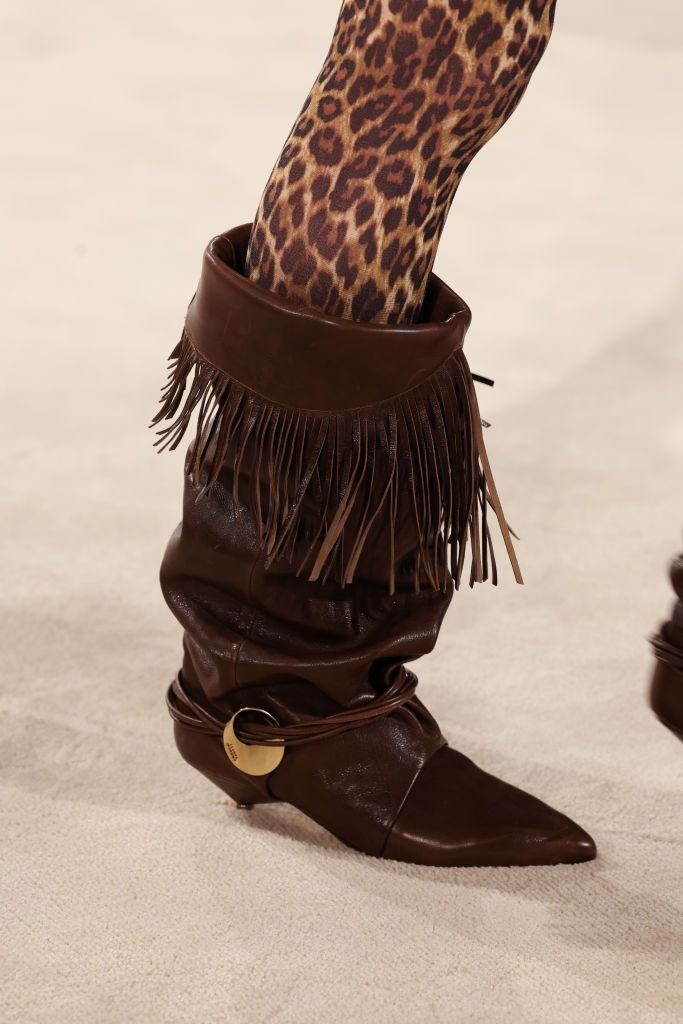Cosmetic Industry Trends: Decoding the Future of Beauty

Introduction
The cosmetic industry has experienced remarkable growth and transformation in recent years, influenced by evolving consumer preferences and technological advancements. As we look ahead to the future of beauty, it’s important to understand the key changes that have influenced the industry. From the increase in online shopping to the popularity of personalized experiences and sustainability efforts, cosmetics are going through a big change.
In this article, we will explore different aspects of cosmetic industry trends, providing insights into:
- Luxury beauty products versus mass-market offerings
- The impact of online shopping on beauty sales
- How AI and AR technologies are improving customer experiences
- Innovations in sustainability
- The metaverse as a platform for beauty brands
- Why more people are demanding natural and organic beauty products
- Regional trends in important markets like China and North America
- The continued influence of social media on beauty trends
- Regulations affecting the industry
- How new technologies are being used for future growth
Join us as we uncover the future of beauty and explore the powerful changes shaping this exciting industry.
1. Luxury Beauty Products vs Mass-Market Products
Luxury beauty products and mass-market offerings differ significantly in several aspects:
Quality and Ingredients
Luxury beauty products often contain higher quality ingredients and are formulated to deliver superior results. On the other hand, mass-market products may compromise on ingredient quality to cater to a larger audience.
Packaging and Branding
Luxury beauty items are often packaged in exquisite, premium containers and are associated with prestigious branding, conveying a sense of exclusivity. Mass-market products, however, typically feature simpler packaging and branding to appeal to a broader consumer base.
Pricing and Accessibility
Luxury beauty products come with a higher price tag, reflecting the premium quality and brand image. Conversely, mass-market products are more affordable and widely accessible to the general population.
The growing popularity of luxury cosmetics can be attributed to several factors:
Perceived Quality
Consumers are increasingly prioritizing product efficacy and are willing to invest in high-quality formulations that deliver visible results.
Aspirational Lifestyle
Luxury beauty brands often convey an aspirational lifestyle and prestige, appealing to consumers who seek status and exclusivity.
Both segments offer distinct advantages and disadvantages for consumers:
Advantages:
- Luxury Beauty Products: Superior quality, luxurious experience, exclusive branding.
- Mass-Market Products: Affordability, accessibility, diverse product range.
Disadvantages:
- Luxury Beauty Products: High price point, limited accessibility.
- Mass-Market Products: Potential compromise on ingredient quality, less exclusive branding.
2. Rise of E-commerce in the Beauty Industry
The beauty industry has seen a big change towards e-commerce, which has been a major factor in the growth of cosmetic sales. Here are some important points to know:
- E-commerce’s Important Role: E-commerce has become a major driver behind the increasing sales of beauty products. With online shopping being so convenient, consumers can easily find and buy a wide range of cosmetics and skincare products from home.
- Factors Driving Success for Online Beauty Retailers: The success of online beauty retailers can be attributed to factors such as personalized product recommendations, easy buying experiences, and the ability to reach consumers all over the world. Plus, being able to provide detailed product info and customer reviews helps build trust and confidence in online shopping.
- More People Going Digital for Beauty Shopping After the Pandemic: The pandemic has made more people turn to digital channels like websites and apps to find and buy products. This includes beauty products too, with consumers now preferring to explore and purchase them online for safety, convenience, and a better digital shopping experience.
E-commerce has not only changed how people buy beauty products but also given brands new chances to reach customers worldwide in a highly competitive market.
3. Personalized Shopping Experiences: The Power of AI and AR Technologies
The cosmetic industry is undergoing a transformative shift with the integration of AI (Artificial Intelligence) and AR (Augmented Reality) technologies. These cutting-edge innovations are revolutionizing the way people purchase cosmetics, offering them customized experiences that significantly enhance their interest and satisfaction.
How AI and AR are revolutionizing the purchasing process in the cosmetic industry
Recent advancements in AI technology have enabled beauty brands to analyze vast amounts of data, gaining profound insights into customer preferences and behavior. By leveraging this data, AI algorithms can provide personalized recommendations tailored to individual needs. For instance, beauty stores can employ AI-powered chatbots to engage with customers, guiding them through their beauty journey and suggesting products that align with their skin type, concerns, and personal style.
On the other hand, AR technology empowers customers to virtually try on different products before making a purchase. Through mobile apps or virtual mirrors found in physical stores, individuals can visualize how various shades of lipstick or eyeshadow would appear on their own face. This seamless integration of online and offline shopping allows customers to make informed decisions without physically trying out products.
Enhancing customer interest through personalized recommendations and virtual try-on experiences
The ability to offer personalized recommendations is one of the primary advantages of incorporating AI and AR technologies into the cosmetic industry. By analyzing customer data such as past purchases, browsing history, and social media activity, AI algorithms can suggest products that align with individual preferences and needs. This not only saves time for customers but also enhances their overall shopping experience by presenting options they genuinely resonate with.
Virtual try-on experiences using AR technology enable customers to experiment with different makeup looks without committing to a purchase. This interactive feature helps individuals visualize how products would look on them, fostering excitement and exploration. By combining AI-driven recommendations with AR try-on capabilities, beauty brands can curate an immersive and personalized shopping experience that deeply resonates with customers.
In conclusion, the integration of AI and AR technologies is revolutionizing the cosmetic industry by offering individuals highly personalized shopping experiences. Through data analysis and virtual try-on features, beauty brands can capture customer interest, provide tailored recommendations, and bridge the gap between online and offline shopping experiences. These technologies empower customers to make well-informed choices while embarking on an immersive and interactive beauty journey.
4. Sustainability Transformed: Biotech Innovations in the Beauty Industry
The combination of biotechnology and sustainability in cosmetics research and development is changing the beauty industry. Biotech innovations have made it possible to have sustainable beauty practices that are good for the environment and still work well. This coming together has led to a big decrease in how much cosmetics hurt the environment, which is exactly what consumers want.
Some great examples of how biotech is helping the environment include using packaging materials that come from plants and can break down naturally, reducing plastic waste and promoting a circular economy. Another way biotechnology is making a difference is by creating ingredients that don’t come from traditional farming methods, which saves water and land while also making sure we know where everything comes from.
Using biotech innovations in the beauty industry does two things: it shows that a brand cares about the environment and gives them a way to stand out from competitors. By using sustainable practices that come from biotechnology, cosmetic companies can create a strong brand story around taking care of the planet. This will resonate with consumers who want beauty products that are made ethically.
5. Exploring the Metaverse: A New Frontier for Beauty Brands
The metaverse is a concept gaining momentum in the beauty industry, offering an immersive platform for consumers to engage with beauty experiences in virtual environments. This digital space presents unique opportunities and challenges for beauty brands to build their presence and connect with consumers in innovative ways.
Understanding the Concept of the Metaverse
The metaverse represents a collective virtual shared space, created by the convergence of physical and virtual reality. It allows users to interact with a computer-generated environment and other users, often in real time, through the use of virtual reality headsets or other devices. In the context of the beauty industry, the metaverse offers a new dimension for consumers to explore products and experiences beyond traditional brick-and-mortar stores or e-commerce platforms.
Opportunities and Challenges for Brand Building
Beauty brands have the opportunity to create captivating virtual experiences that allow consumers to virtually try on makeup, experiment with different hairstyles, or visualize skincare benefits in a simulated environment. However, navigating this new frontier comes with challenges such as ensuring seamless user experiences, addressing privacy concerns, and standing out in a rapidly evolving digital landscape.
The metaverse holds great promise for reshaping consumer engagement within the beauty industry, offering an exciting avenue for brands to redefine their relationships with customers and explore creative avenues for product discovery and interaction.
6. The Growing Demand for Natural and Organic Beauty Products
The cosmetic industry is undergoing a significant change as more and more consumers embrace ethical consumerism. This shift can be seen in the increasing popularity of the natural and organic beauty movements, which are driven by a desire for cleaner, greener, and more sustainable beauty options.
6.1 Transparency and Authenticity: What Consumers Want
One of the main reasons behind this change in consumer behavior is the desire for transparency and authenticity from brands. People want to know exactly what goes into the products they use and whether these products align with their personal values. This has led to the rise in popularity of natural and organic beauty products.
- Natural Beauty Products: These products are made from plant-based ingredients, which are perceived as being pure and free from harmful chemicals.
- Organic Beauty Products: These products are produced without the use of synthetic pesticides or genetically modified organisms (GMOs), making them a sustainable choice for environmentally-conscious individuals.
6.2 The Challenges Faced by Brands
While there is a clear demand for natural and organic cosmetics, brands face challenges in navigating this space:
- Greenwashing: With the increasing popularity of clean beauty, there is also a risk of greenwashing. This refers to when brands falsely market their products as natural or organic without actually meeting the required standards. Such misleading claims can make it difficult for consumers who genuinely want to make ethical choices.
- Certifications: To establish credibility and reassure consumers, brands need to invest in certifications that validate their natural or organic claims. One such recognized certification is COSMOS, which serves as a unified certification for natural and organic beauty products. Obtaining these certifications can help differentiate genuine brands from those engaging in greenwashing practices.
6.3 The Way Forward for Brands
To strike a balance between authenticity and marketing, brands need to:
- Invest in Certifications: By obtaining recognized certifications like COSMOS, brands can demonstrate their commitment to ethical practices and gain the trust of discerning consumers.
- Educate Consumers: Brands should also take the initiative to educate consumers about the importance of these certifications and how to identify genuine natural and organic products.
6.4 The Importance of Ethical Beauty Movements
The rise of ethical beauty movements signifies a shift towards cleaner and greener beauty choices. It reflects consumers’ increasing preference for products that are not only effective but also safe for their health and the environment. By supporting natural and organic beauty brands, individuals can contribute to a more sustainable future while taking care of their own well-being.
[Word Count: 262]
7. Geographical Dynamics: China, North America, and Beyond
The cosmetic industry is always changing, so it’s important to know about the main beauty markets around the world and how they affect global trends. Two regions that have a big influence on the industry are China and North America.
China: A Growing Market with Unique Preferences
In recent years, the cosmetic market in China has grown very quickly. With a huge population and more money to spend, Chinese consumers have become very important in the beauty industry. One interesting thing happening in China is that people are starting to care more about taking care of their skin and looking young, which has led to a higher demand for skincare products. Another trend in China is that people prefer using beauty products made from natural ingredients that are good for the environment, which is also something we see happening all over the world.
North America: Leading the Way with Innovation and Inclusivity
On the other hand, North America is still a very strong leader in the global cosmetics market. This region is known for coming up with new ideas and being a trendsetter for the rest of the world when it comes to beauty. In North America, there is a big focus on making sure everyone feels included and represented in the beauty industry. That’s why we see more brands now offering makeup and skincare products for different skin tones and ethnic backgrounds. Another important movement happening in North America is that people care more about using beauty products that are good for them and don’t harm the environment.
Understanding Regional Preferences for Success
Both China and North America have their own unique ways of thinking about beauty, and these ways affect what kinds of products are popular there. For brands that want to do well in these markets, it’s important to understand what matters most to consumers. In China, people care a lot about skincare and using natural ingredients. In North America, people want to feel included, and they also care about sustainability and coming up with new ideas.
Other Regions Making an Impact
While China and North America are important, there are also other parts of the world that are shaping trends in the cosmetic market:
- Europe: This region is known for its luxury beauty brands and fancy skincare products.
- South Korea: South Korea has become a global leader in skincare with its innovative K-beauty products.
- The Middle East: In this region, there is a higher demand for halal-certified cosmetics that follow Muslim beliefs.
- Indie Brands: The indie brands are making waves in the cosmetic market by offering unique and innovative products that cater to niche consumer preferences.
Tailoring Strategies to Meet Regional Preferences
By looking at what’s happening in different parts of the world, brands can make plans that fit what people there like and take advantage of new trends. It’s important for companies to be able to change and give consumers what they want if they want to do well in the beauty industry worldwide.
8. The Lasting Impact of Social Media on Beauty Culture
Social media has become an incredibly powerful tool in shaping beauty culture, influencing trends, and driving consumer behavior in the cosmetic industry. Here’s what you need to know:
1. Redefining Beauty Standards
Social media platforms have completely changed our idea of what is beautiful, allowing for a much wider range of voices and representations to be heard. Influencers and regular people alike are showcasing all kinds of beauty styles, pushing back against old-fashioned norms and creating a more welcoming space for everyone.
2. The Power of Trends
One of the biggest ways social media affects the beauty industry is through trends. When something becomes popular online, it can spread like wildfire and have a huge impact on what products people buy. Whether it’s a new makeup look, a skincare routine, or haircare tips, these trends can quickly take over social media platforms and greatly influence what consumers want.
3. The Rise of Influencer Marketing
Influencer marketing has become an essential part of how beauty brands promote themselves. By partnering with influencers and content creators, companies can form genuine connections with their target audience, which leads to greater awareness, engagement, and ultimately, more sales.
While social media continues to change and evolve, it’s clear that its influence on the beauty industry is here to stay. This means that brands will need to adapt their marketing strategies accordingly in order to succeed in this new digital landscape.
9. Navigating Regulatory Landscapes in a Globalized Beauty World
In today’s global beauty industry, it’s crucial for brands to comply with international regulations if they want to grow and enter new markets. However, the cosmetic industry is regulated differently in each country, which can make it difficult for brands to understand and meet all the requirements.
Here are some key things to know about navigating regulatory landscapes in the global beauty industry:
- Why compliance matters: Following international regulations is important because it helps brands:
- Gain approval to sell their products in different countries
- Build trust with consumers by ensuring product safety and quality
- Understanding country-specific rules: Each country has its own set of regulations governing cosmetics. Some areas that brands need to pay attention to include:
- Labeling requirements: What information needs to be included on product packaging?
- Ingredient restrictions: Are there any substances that are banned or limited?
- Product testing: Are there any specific tests that need to be conducted?
- Learning from success stories: Many beauty brands have successfully entered new markets by focusing on regulatory compliance. For instance:
- Brand X carefully followed all European Union cosmetic regulations when launching their products in Europe, which led to a successful market entry.
- Getting help from experts: Brands can work with regulatory consultants who specialize in international regulations. These professionals can offer guidance on how to navigate different requirements and ensure compliance.
- Keeping up with changes: Regulatory landscapes are always changing, with new laws and standards being introduced regularly. It’s important for brands to stay updated on any developments that may affect their products or market access.
By making compliance a priority and taking proactive steps to understand and meet regulations, beauty brands can successfully navigate the global regulatory landscapes and expand into new markets while maintaining consumer trust.
10. Embracing Technological Innovations for Future Growth
The beauty industry is no stranger to technological advancements, and embracing cutting-edge technologies is crucial for brands to drive innovation and stay ahead in the competitive cosmetics landscape. As emerging markets continue to gain momentum, the integration of technology becomes even more essential for future growth and success.
Here are some key talking points to consider:
1. Harnessing cutting-edge technologies
Beauty brands are leveraging technology in various ways to enhance their products, services, and customer experiences. For example:
- Augmented Reality (AR) allows customers to virtually try on makeup products before making a purchase, offering a personalized and interactive shopping experience.
- Artificial Intelligence (AI) is being used to analyze consumer preferences and provide tailored product recommendations, improving customer satisfaction and loyalty.
- Internet of Things (IoT) devices are enabling smart skincare solutions that monitor skin condition and provide personalized skincare routines.
2. Promising opportunities in emerging beauty markets
Technology opens up new avenues for growth and diversification, particularly in emerging beauty markets. These markets often have unique consumer preferences and needs, providing opportunities for innovative solutions. For instance:
- In Asian markets like South Korea and Japan, beauty brands are incorporating advanced skincare technologies such as facial recognition and AI-driven diagnostics to offer personalized skincare regimens.
- The Middle East has seen a surge in demand for halal cosmetics, prompting the development of technology-driven halal certification processes to cater to this specific market segment.
By embracing technological innovations, beauty brands can not only improve their existing offerings but also tap into the potential of emerging markets. This combination of advanced technology and market expansion can pave the way for future growth and success in the dynamic world of cosmetics.
Conclusion
The cosmetic industry is always changing, so brands need to be flexible and forward-thinking. To succeed in the future of beauty, they must embrace change and stay updated on new trends. Technology, sustainability, and consumer behavior are constantly evolving, so brands need to be vigilant and adaptable. As new markets emerge and consumer preferences change, the industry will keep transforming, bringing both challenges and opportunities.
Brands need to be quick and proactive in responding to these changes. By using technology and adopting sustainable practices, beauty companies can set themselves up for future growth and expansion. Plus, understanding what consumers care about and focusing on personalized experiences will be key to staying successful in the industry.
As readers, it’s important for us to stay informed about the latest trends and market changes. Adapting to the evolving beauty world means being open-minded and willing to try new strategies. By recognizing the potential of new trends and technologies, both brands and consumers can actively shape the future of the cosmetic industry.
In this fast-paced world, those who are ready to innovate and adjust will lead the way in shaping the future of beauty.










